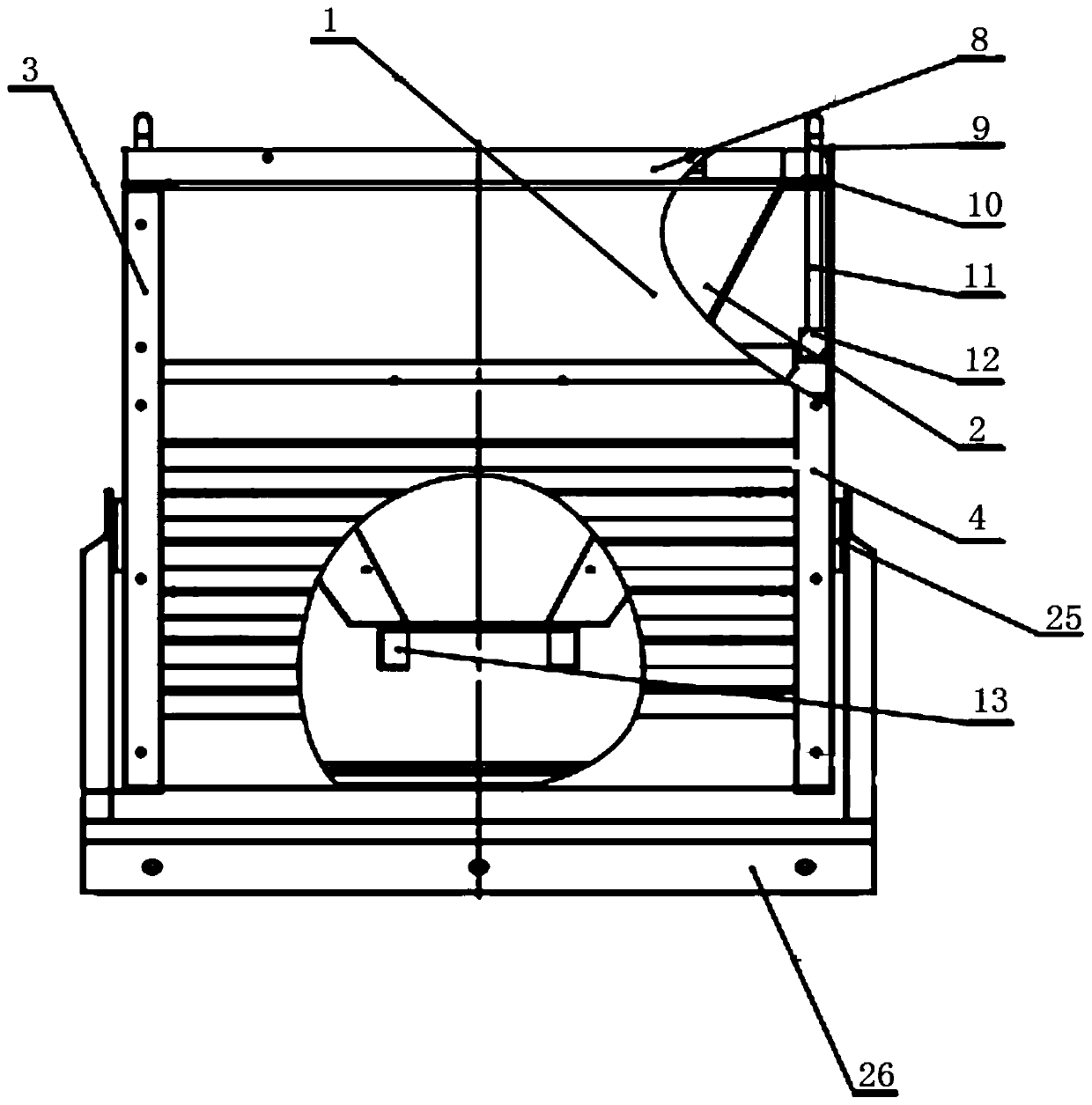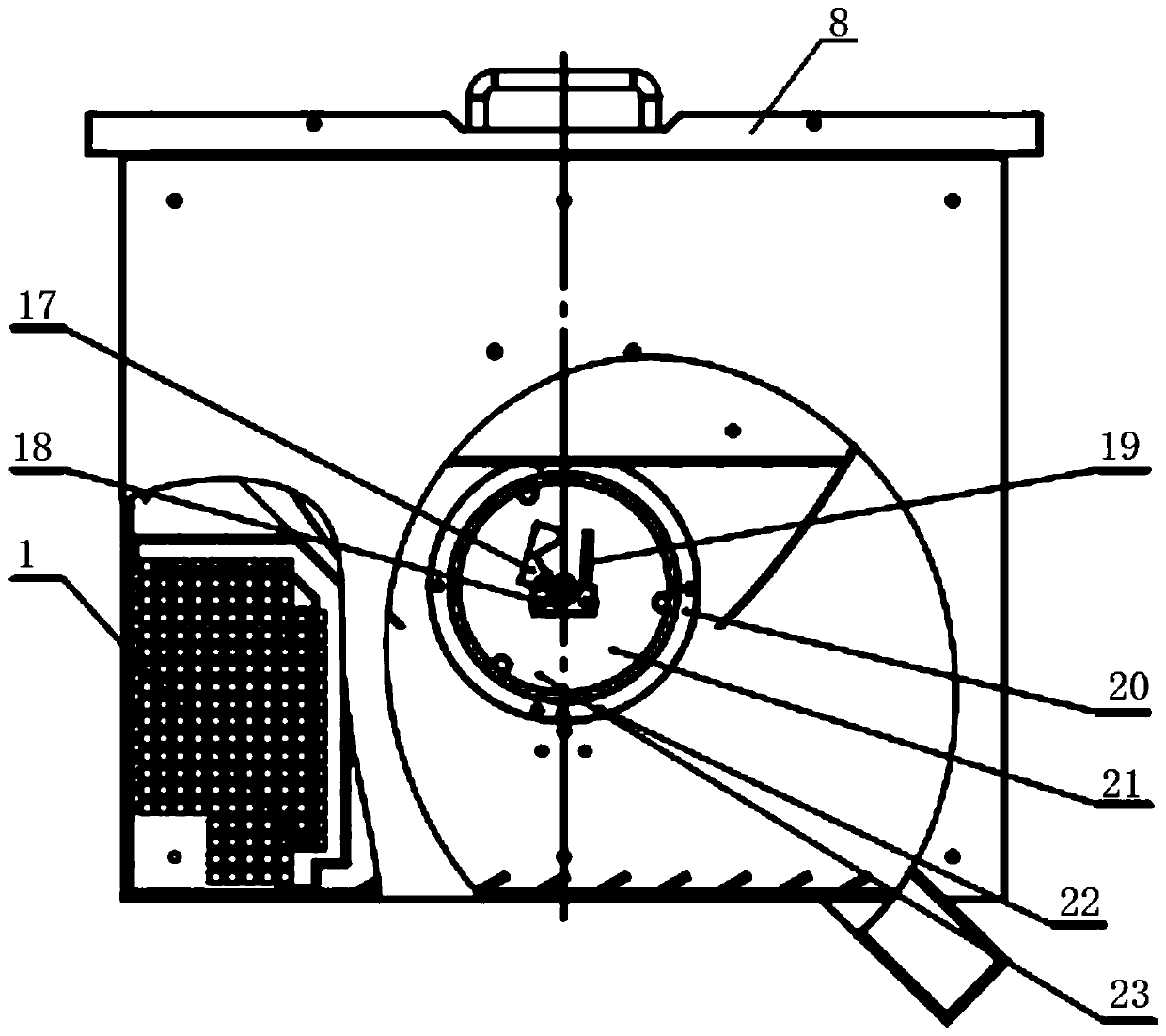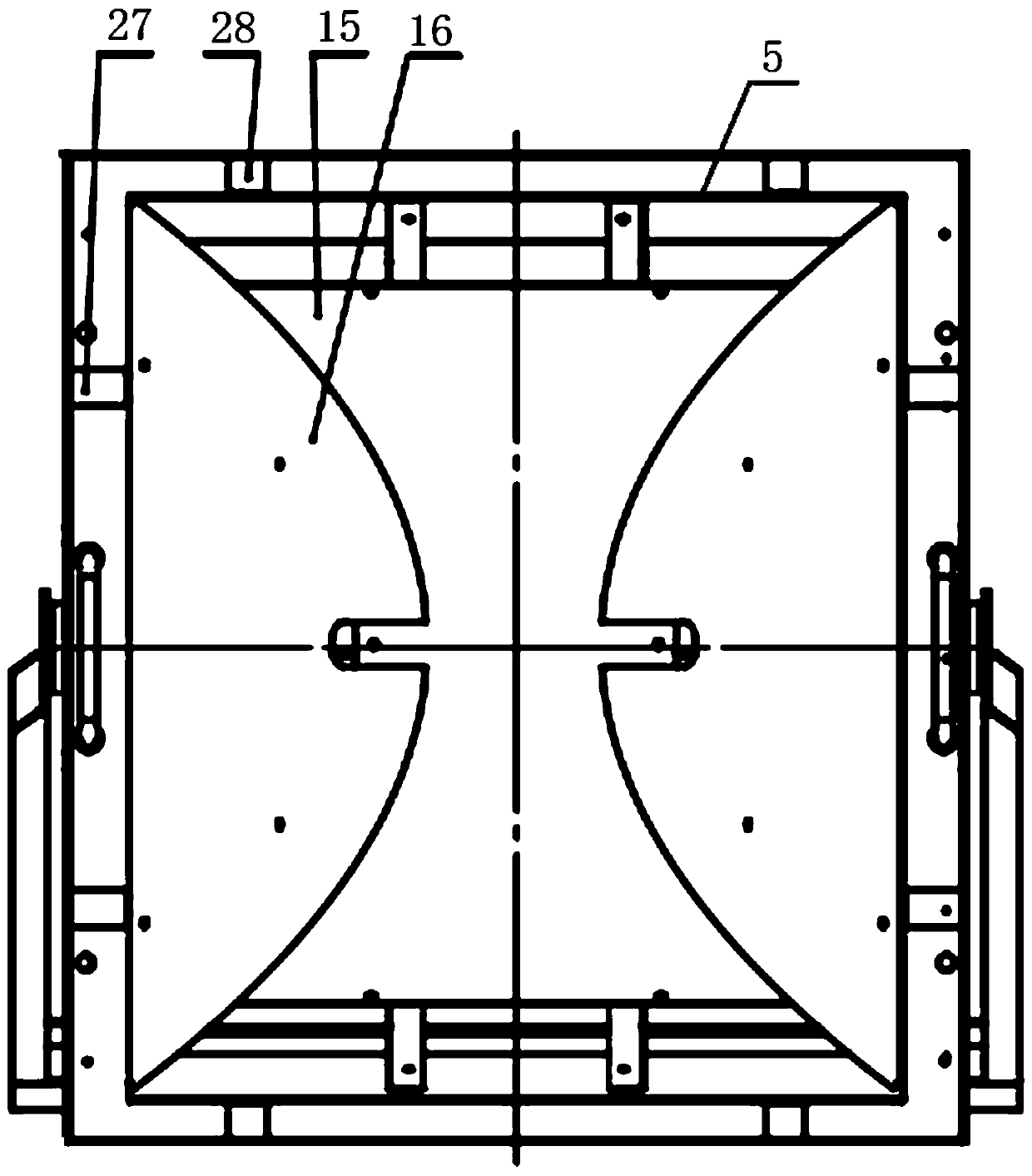Coaxial light emitting device and emitting method based on conic curve optical properties
A technology of emission device and optical properties, applied in the field of light processing, can solve the problems of large experimental error and low light utilization rate, and achieve the effects of small experimental error, high light utilization rate, and avoiding excessive temperature reduction.
- Summary
- Abstract
- Description
- Claims
- Application Information
AI Technical Summary
Problems solved by technology
Method used
Image
Examples
Embodiment 1
[0066] see figure 1 , figure 2 as well as image 3 , this embodiment provides a coaxial light emission device based on the optical properties of conic curves, which can be used as a light source device in exposure or photocorrosion experiments, which can generate light similar to natural light, thereby simulating the effect of natural light Lighting process. Wherein, the coaxial light emitting device includes a frame, a reflector 2, a positioning mechanism, a lamp tube, a temperature sensor 1, a heat dissipation mechanism and a controller. In this embodiment, the device may also include a polarizing glass 5, a bracket 13, Spacer 25, handle 26, handle 9, washer 10, pin hole block 12 and installation assembly.
[0067] The frame 1 includes a plurality of boards, and these boards are designed to be arranged as louvers. Wherein, among the two boards arranged oppositely, one is the side board one 3 and the other is the side board two 4 . And, the plate body located at the top...
Embodiment 2
[0086] This embodiment provides a coaxial light emitting device based on the optical properties of conic curves, which refines the reflection plane 16 on the basis of Embodiment 1. Wherein, two reflection planes 16 are located at both ends of the parabolic cylinder 15, and are used to reflect part of the light emitted from both sides of the lamp tube into two linear coaxial light rays. Moreover, the included angle between the reflection plane 16 and the extending direction of the parabolic cylinder 15 is 45 degrees. Of course, in other embodiments, the value of the angle can be around 45 degrees, which can be determined according to the angle between the light emitted from the end of the lamp tube and the parabolic cylinder 15, and enough angles can be guaranteed after selecting this value. The light rays are reflected from the reflective plane 16. Of course, the reflective plane 16 can also be an oxidized surface, which can maximize the reflection of light and improve the ut...
Embodiment 3
[0088] This embodiment provides a coaxial light emitting device based on the optical properties of conic curves, which adds a temperature display mechanism on the basis of Embodiment 1. Wherein, the temperature display mechanism includes a plurality of temperature sensors 2 and a display. A plurality of temperature sensors 2 are respectively used to detect the temperature of each area in the frame 1 . Wherein, the temperature sensor 2 can be used to detect the temperature of the reflector 2 , can also detect the temperature of the cylindrical space formed by the parabolic cylinder 15 , and can also detect the temperature in the frame 1 . The display is used to display the temperature detected by the second temperature sensor, so that the experimenter can grasp the temperature situation in the device in real time, and deal with the device in time when the temperature is too high. In some embodiments, a portion of the temperature sensor and a portion of the second temperature s...
PUM
 Login to View More
Login to View More Abstract
Description
Claims
Application Information
 Login to View More
Login to View More - R&D
- Intellectual Property
- Life Sciences
- Materials
- Tech Scout
- Unparalleled Data Quality
- Higher Quality Content
- 60% Fewer Hallucinations
Browse by: Latest US Patents, China's latest patents, Technical Efficacy Thesaurus, Application Domain, Technology Topic, Popular Technical Reports.
© 2025 PatSnap. All rights reserved.Legal|Privacy policy|Modern Slavery Act Transparency Statement|Sitemap|About US| Contact US: help@patsnap.com



